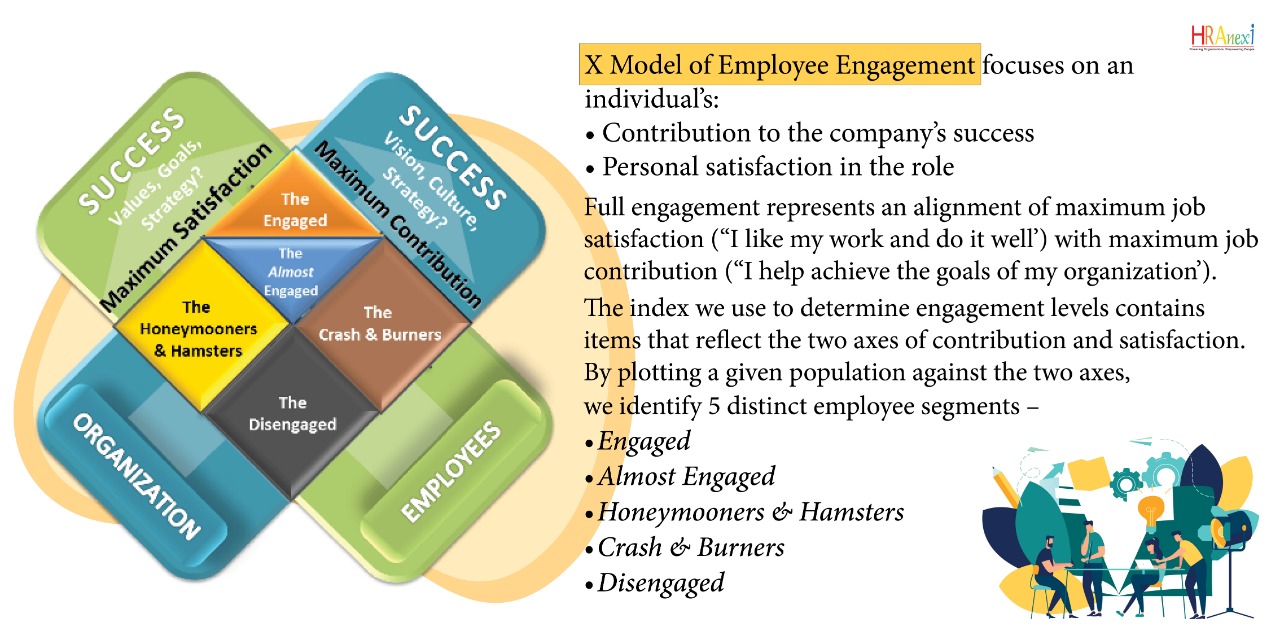Employee Engagement has been a buzz word for quite some time now. And it isn’t going away any time soon. This is because it is a crucial metric to gauge the effectiveness of individuals, teams and consequently organisations.
A recent study has shown that teams that have a higher engagement rate are
21% more productive.
And there is enough evidence to prove that only when employees are engaged, they put in ‘
discretionary effort ’, but also take ownership of their jobs and contribute beyond what’s expected of them.
So how can we define employee engagement?
 Employee engagement
Employee engagement is the emotional commitment the employee has to the organisation and its goals
.
The emotional commitment implies that engaged employees actually care about their work and their company. They don’t work just for a paycheque or for a promotion but work to achieve the organisation’s goals. Such employees are satisfied with their role and contribute wholeheartedly to achieve desired results.
But why is employee engagement necessary?
Besides impacting the productivity of the organisation, employee engagement directly affects the attrition & retention rate. When an organisation focuses on the employee satisfaction and contribution of every employee, it not only attracts quality talent but also helps retain existing high performing employees. And that’s the ultimate road to becoming a
high performance organisation.
How can we measure employee engagement?
Employee engagement can be assessed through Employee Engagement Surveys (EES) that are focused on parameters such as strategy alignment, trust in leadership, and employee-manager dynamics. While different organisations have devised different frameworks to gauge engagement, we employ the X model.
The X model focuses on individual’s
- personal satisfaction the role
- contribution to company’s success

The index we use to determine engagement levels contains items that reflect the two axes of contribution and satisfaction. And when we plot a given population against the two axes, we can club them into
5 distinct employee segments:
1. The Engaged
These employees are at “the apex” where personal and organizational interests align. They contribute fully to the success of the organization and find great satisfaction in their work. They are known for their discretionary effort and commitment. When recruiters call, they cordially cut the conversation short
2. Almost Engaged
These employees are among the high performers and are reasonably satisfied with their job. They may not have consistent “great days at work,” but they know what those days look like.
3. Honeymooners & Hamsters
Honeymooners are new to the organization or their role – and happy to be there. They have yet to find their stride and or clearly understand how they can best contribute. Hamsters may be working hard but are in effect “spinning their wheels,” working on non-essential tasks, contributing little to organizational success. Some may even be hiding out, curled up in their cedar shavings, content with their position (“retired in place”).
4. Crash & Burners
Disillusioned and potentially exhausted, these employees are top producers who aren’t achieving their personal definition of success and satisfaction. They can be bitterly vocal about the fact that senior leaders are making bad decisions or that colleagues are not pulling their weight. If left alone, they are likely to slip down the contribution scale to become.
5. The Disengaged
Most Disengaged employees didn’t start out as bad apples. They still may not be. They are the most disconnected from organizational priorities, often feel underutilized, and are clearly not getting what they need from work. They are likely to be sceptical, and can indulge in contagious negativity.
But is categorising employees based on their engagement levels enough?
Definitely not. The surveys alone are not sufficient as they are indicative only. What should follow is a concrete action plan that addresses the need of different employees, basis their engagement levels. Employee engagement is critical as it directly impacts the productivity and performance of the individual, team and the organisation.
Therefore, employee engagement isn’t going away any time soon. It is here to stay. But yes, maybe with time we will develop new and better ways to engage the employees.
Leave a Reply
Your email address will not be published. Required fields are maked*
 Employee engagement is the emotional commitment the employee has to the organisation and its goals.
The emotional commitment implies that engaged employees actually care about their work and their company. They don’t work just for a paycheque or for a promotion but work to achieve the organisation’s goals. Such employees are satisfied with their role and contribute wholeheartedly to achieve desired results.
Employee engagement is the emotional commitment the employee has to the organisation and its goals.
The emotional commitment implies that engaged employees actually care about their work and their company. They don’t work just for a paycheque or for a promotion but work to achieve the organisation’s goals. Such employees are satisfied with their role and contribute wholeheartedly to achieve desired results.
 The index we use to determine engagement levels contains items that reflect the two axes of contribution and satisfaction. And when we plot a given population against the two axes, we can club them into 5 distinct employee segments:
The index we use to determine engagement levels contains items that reflect the two axes of contribution and satisfaction. And when we plot a given population against the two axes, we can club them into 5 distinct employee segments:
